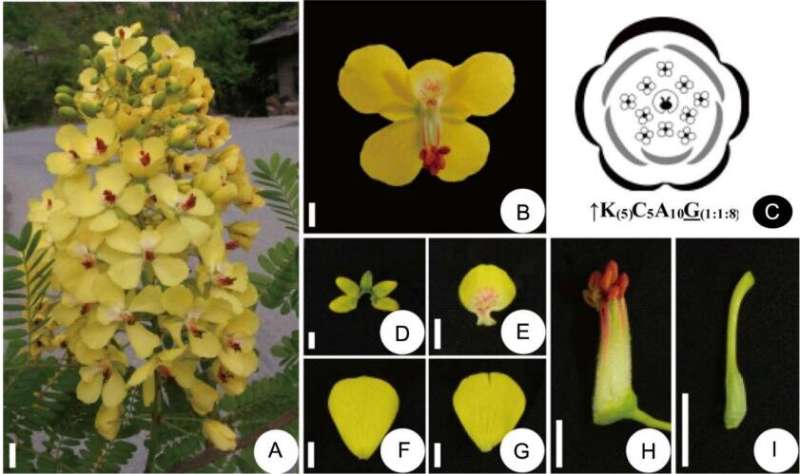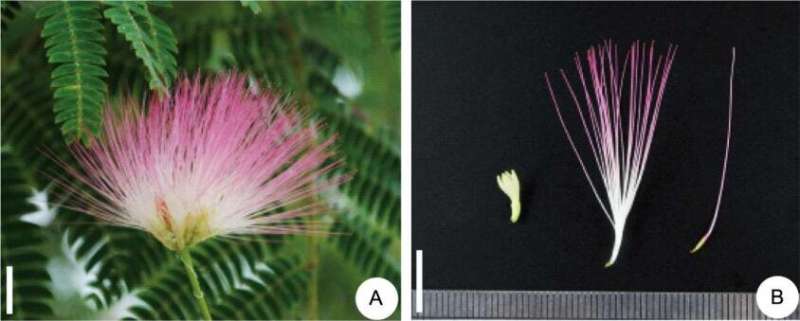Researchers investigate floral development of two legume plants

The legume family (Fabaceae) is one of the largest groups of flowering plants. The Fabaceae are further divided into six subfamilies based on morphological and molecular data. Despite its diversity in floral architecture and morphology, the subfamily Caesalpinioideae has been understudied.
In a study published in Taiwania, researchers from the Xishuangbanna Tropical Botanical Garden (XTBG) of the Chinese Academy of Sciences and their collaborators used scanning electron microscopy to examine the floral morphology and development of two legume species in the subfamily Caesalpinioideae, Biancaea decapetala (a caesalpinioid), and Albizia julibrissin (a mimosoid).
They observed that Biancaea decapetala had a racemose inflorescence, whereas Albizia julibrissin had capitate heads. In A. julibrissin, central sepal initiation was adaxial, and sepal development was helical, whereas it was unidirectional and abaxial in B. decapetala. Another notable difference was that in A. julibrissin, the carpel remained open and unfused at the initiation of ovule and fused later, whereas, in B. decapetala, the carpel margins fused before the ovules appeared.
They also found that the floral initiation and development took place in a sequential manner, and that all floral whorls underwent the necessary changes in cell/tissue organization. In A. julibrissin, ovule initiation appeared to be earlier, and there was also a marked fusion of sepals.

Furthermore, variability in sepal initiation may be due to the helical pattern of floral development in Caesalpinioids.
“Our data on phylogenetically relevant characters can provide valuable insights and help to further understand legume systematics, especially in the mimosoid clade nested in the subfamily Caesalpinioideae,” said Liu Hongmei of XTBG.
More information:
Shabir A. Rather Floral development in Biancaea decapetala and Albizia julibrissin (Fabaceae: Caesalpinioideae), and its systematic significance, Taiwania (2023). DOI: 10.6165/tai.2023.68.281. taiwania.ntu.edu.tw/abstract/1937
Citation:
Researchers investigate floral development of two legume plants (2023, July 10)
retrieved 10 July 2023
from https://phys.org/news/2023-07-floral-legume.html
This document is subject to copyright. Apart from any fair dealing for the purpose of private study or research, no
part may be reproduced without the written permission. The content is provided for information purposes only.
For all the latest Science News Click Here
For the latest news and updates, follow us on Google News.

